
The project Landscape Processes in Antarctic Ecosystems has six Rhodes Geographers heading to Antarctica on 4 December for the 2014/15 Summer to do research, including five women, which must be a record for South African Teams.
“Most people that go to the Antarctic under the South African programme (SANAP) are in fact male. On average (for those trips I have been to SANAE IV) there have been approximately five to ten females amongst those going.”
“This compares to approximately 80 to 100 males that are at base during the relief voyage. I might be a few numbers off but it is a fact that very few women go down to SANAE IV,” says Christel Hansen who will be going for her fourth season.
Hansen is completing her PhD and will be joined by fellow Masters Students Liezel Rudolph, Camilla Kotze, Gaby Ayres and Jessica Rosenfels. They will be led by Professor Ian Meiklejohn, who is overseeing the entire project. Each student’s project answers a specific objective of the larger project.
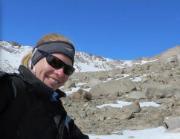
Hansen’s project examines frost cycles and their dynamics over 24 hour periods.
“I collect temperature and moisture data at different depths within the ground (2.5cm-60cm depths, with one site going down to 2m). I also collect sediment samples from each site and determine their particle size distribution and organic content. I also take observational data including snow and ice cover, vegetation and animal presence, landforms that are the result of the frost cycles and any other data I deem pertinent,” she explains.
In addition to her Antarctic sites Christel also has study sites at Marion Island and the Eastern Cape Drakensberg.
“The Antarctic study sites are important to my project because these lie the furthest South (have the highest latitude),” says Hansen.
The whole journey takes about 10 weeks. The team will be on the continent between four and six weeks, the rest of the time will be spent on the Agulhas II in getting to the ice shelf and back to Cape Town.
Rudolph, Rosenfels and Hansen have also all been to Marion Island and are used to working and being in each other’s company for extended periods of time. Christel will be the most experienced student in the team while Liezel has also spent a season in the Antarctic.
“The greatest benefit of having students on the team that have done this journey before is that the new members can be guided in their work and what to expect of the trip,” says Hansen.
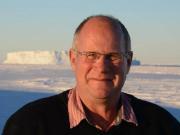
“Prof Meiklejohn can delegate some of his duties to me. He will be Chief Scientist for the science teams at base (in addition to being our team leader) so he'll be very busy. I am also able to assist the other students with their fieldwork and projects, because I have been to all the various sites a number of times and have an idea of what is possible where and how,” says Hansen.
“The Antarctic can be unforgiving and is incredibly demanding. You have to be physically and mentally strong and tough. You must be able to carry heavy loads and work all day long - the weather determines everything and if we have good weather we work as long and hard as possible,” says Hansen.
The team are not concerned by the demanding work ahead of them in an all-female team. New members of the team have had some training in knots, abseiling and pulley systems while everyone receives training on the ship.
"An all women team is preferable in terms of sharing a tent during whiteouts in the field. Harsh weather conditions may persist for a couple of days or more, and we have to be prepared for that as there will be no personal boundaries in a small 5 man tent during that time” adds Kotze who will be going to Antarctica for the first time.
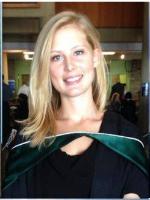
Kotze’s research is looking at active layers, permafrost and teleconnection. Her project is unique in that data is collected all year round so her trip is mainly to familiarise herself with the environment.
“In the 1960’s during nuclear testing, Caesium 137 was one of the heavy metal fallouts which got distributed globally. It’s in the top few centimetres of the soil. It’s a dating method for the past 60 years. With the different type of land forms, cryoturbation, the more patterns form. We want to see how active these landforms and Caesium 137 is a good indicator for that,” explains Kotze.
The sites that are being studied are rocky parts of mountaintops that rise above the ice. These are also known as nunataks. These are mostly on the periphery of the continent.
“I’m really hoping nothing happens, but it really should be quite safe because we have been into all our nunataks a lot and last year there were no incidences. It’s only when you are exploring new territory that these things happen,” adds Kotze.
Fieldwork is incredibly tough. There are no roads or cars to take you around. The team will make use of Ski-Doos, think jet skis for the snow, to reach their study sites from base. But at the sites the team has to walk everywhere.
“It means trekking over snow and ice and even if there is rock it is sharp and angular and you can easily hurt yourself. So when you have successfully finished a portion of work with your team members you have an incredible feeling of achievement (and relief),” shares Hansen.
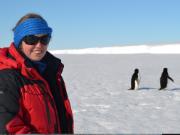
Rudolph is doing a project on rock glaciers, a massive body of ice that has debris on top and is moving down slowly or a massive debris body with ice inside. It is a slow mass movement process that takes years to form. A rock glacier that formed thousands of years ago. She is looking at a rock glacier at Troll, which is a Norwegian station, which is quite far from the SANAE IV. They will fly there from base.
Ayres is doing work on lichen and mosses and she is continuing and building on an established project. The team will be taking a lot of liken sampling bags for her. As this is her first trip the rest of her data will be collected next time.
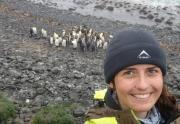
Rosenfels is looking at tafoni, which is severely weathered rock that has lots of holes in it and pitted surfaces. It is also called honeycomb weathering due to looking a bit like the honeycombs of bees when tafoni is well established.
It links with Gaby’s project as it provides a sheltered place for lichen to grow. She will use an infrared camera to look at the temperature of the rocks and the points of weakness. The team will visit different nunataks to take photographs of the rocks.
“We are planning on going to Borgmassivet, it’s a huge nunatak so we will have to ski-doo over two or three days to get there, they’ve flown there once but they couldn’t land. We never included it in the project initially because there are crevasses. We will have to camp at Borgmassivet for a night. We are hoping it’s not too bad because this year has highest record of sea ice,” adds Kotze.
A crevasse is a deep crack in the ice sheet and falling into one can be fatal.
“It is fascinating how different every trip can be. I have had trips with terrible weather: storms that lasted ten days, weather so bad we were stuck in sea ice on the Agulhas II and took days to move only a few nautical miles, freezing cold and gale-force winds. On the other hand I've also experienced great weather. When there is no wind it can be like a hot summer's day (even if the air temperature is -5°C),” says Hansen.
“I think that ultimately the best part of these trips is meeting the people that do the journeys, to learn what they do - be it oceanography, space weather, base maintenance, meteorology, or journalism. It is such a variety of people that make these journeys and meeting them is always a pleasure. It is also amazing to see the breadth of skill and talent South Africa has in its researchers,” adds Hansen.
“It is always exhilarating to see the first sea ice or ice berg, to see whales, seals, penguins and a plethora of sea birds. And not many words can explain the feeling you get when you see the ice shelf loom up ahead.
“So overall it's a spectacular experience. But the voyage does occur over Christmas and it is tough to be away from family and friends. So while it is always sad to leave the Antarctic at the end of the trip I am always excited to know that I'll be able to see my family again and to share my stories with them upon my return,” says Hansen.
The Aghulas II is scheduled to return on 17 February 2015.
